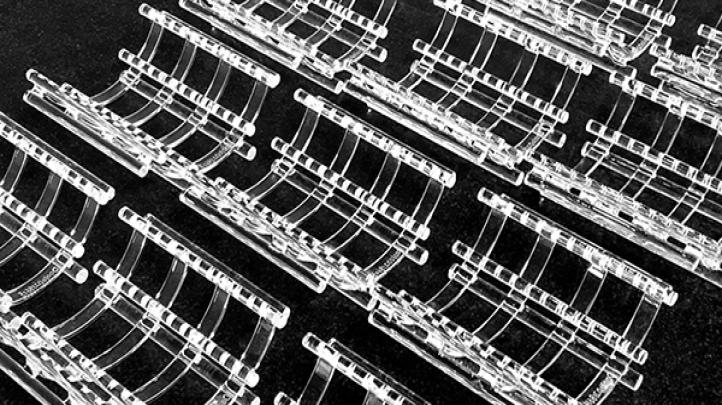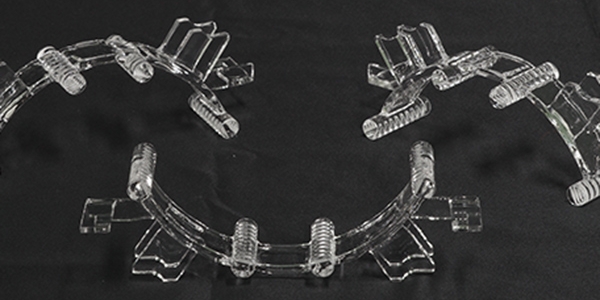NEWS DETAIL

What is Considered High-Purity Quartz?
High-purity quartz (HPQ) refers to natural or synthetic quartz materials with extremely low levels of impurities such as aluminum, iron, lithium, and titanium. Typically, quartz is classified as “high-purity” when its silicon dioxide (SiO₂) content exceeds 99.99%. In advanced applications—such as semiconductor crucibles, optical fiber production, and high-performance glass—purity levels can reach 99.995% or higher.
The higher the SiO₂ content and the lower the metallic and non-metallic contaminants, the more consistent and stable the quartz will perform under thermal, mechanical, or chemical stress.

Key Indicators of Quartz Purity
Several measurable parameters are used to evaluate quartz purity:
SiO₂ Content: The primary purity indicator. Top-grade HPQ exceeds 99.995%.
Trace Element Levels: The concentration of Fe₂O₃, Al₂O₃, TiO₂, and Na₂O should be in parts per million (ppm) or lower.
Transparency and Color: High-purity quartz is often transparent or milky white with minimal discoloration. Yellow or brown tints may indicate the presence of iron or organic impurities.
Uniform Grain Structure: Consistency in crystal grain size and minimal fractures also signal better purity and performance stability.
Common Impurities Found in Quartz
Even naturally formed quartz contains minute impurities that can influence its physical and chemical properties. The most common include:
- Iron (Fe): Causes yellow or reddish discoloration and affects thermal stability.
- Aluminum (Al): Alters the crystal structure and electrical properties.
- Titanium (Ti): Affects optical clarity, especially in UV transmission applications.
- Lithium and Sodium: Influence the melting point and chemical reactivity.
High-quality processing—such as acid leaching and magnetic separation—helps remove these contaminants to meet stringent industrial standards.
Testing Methods for Quartz Purity
Professional evaluation of quartz purity involves both chemical analysis and physical inspection:
- X-Ray Fluorescence (XRF): Measures elemental composition to identify trace metals.
- ICP-OES / ICP-MS: Detects ultra-low levels of metallic impurities (in ppb range).
- Spectrophotometry: Assesses optical transmission to determine clarity and contamination.
- Thermogravimetric Analysis (TGA): Checks for moisture or organic residues.
- Microscopic Examination: Reveals inclusions, cracks, and structural uniformity.
These tests help ensure that the quartz meets specifications for electronics, lighting, and precision optical industries.
How to Read Supplier Specifications
Understanding supplier data sheets is critical when sourcing high-purity quartz products:
- Chemical Composition: Always review the SiO₂ percentage and impurity limits (usually shown in ppm).
- Grain Size or Dimensions: Impacts melting behavior and machining precision.
- Thermal Expansion and Softening Point: Important for applications in high-temperature environments.
- Quality Certifications: ISO, RoHS, or third-party purity testing certificates indicate product reliability.
- Batch Consistency: Ask for production traceability and sample test reports to confirm repeatable purity standards.
Tips for Choosing a Reliable Quartz Supplier
Finding a trustworthy supplier can make a significant difference in product consistency and cost-effectiveness:
- Experience and Technical Expertise: Look for suppliers specializing in HPQ processing and refining.
- Transparent Testing Data: Reputable suppliers provide detailed laboratory analysis upon request.
- Customized Purity Grades: The ability to tailor purity and dimensions for specific applications is a good sign of capability.
- Stable Supply Chain: Consistent raw material sourcing ensures uniform product quality.
- Positive Industry Reputation: Long-term clients and positive reviews reflect reliability.
Working with a professional manufacturer who prioritizes quality control ensures that every quartz product meets the high-performance requirements demanded by advanced industries.





